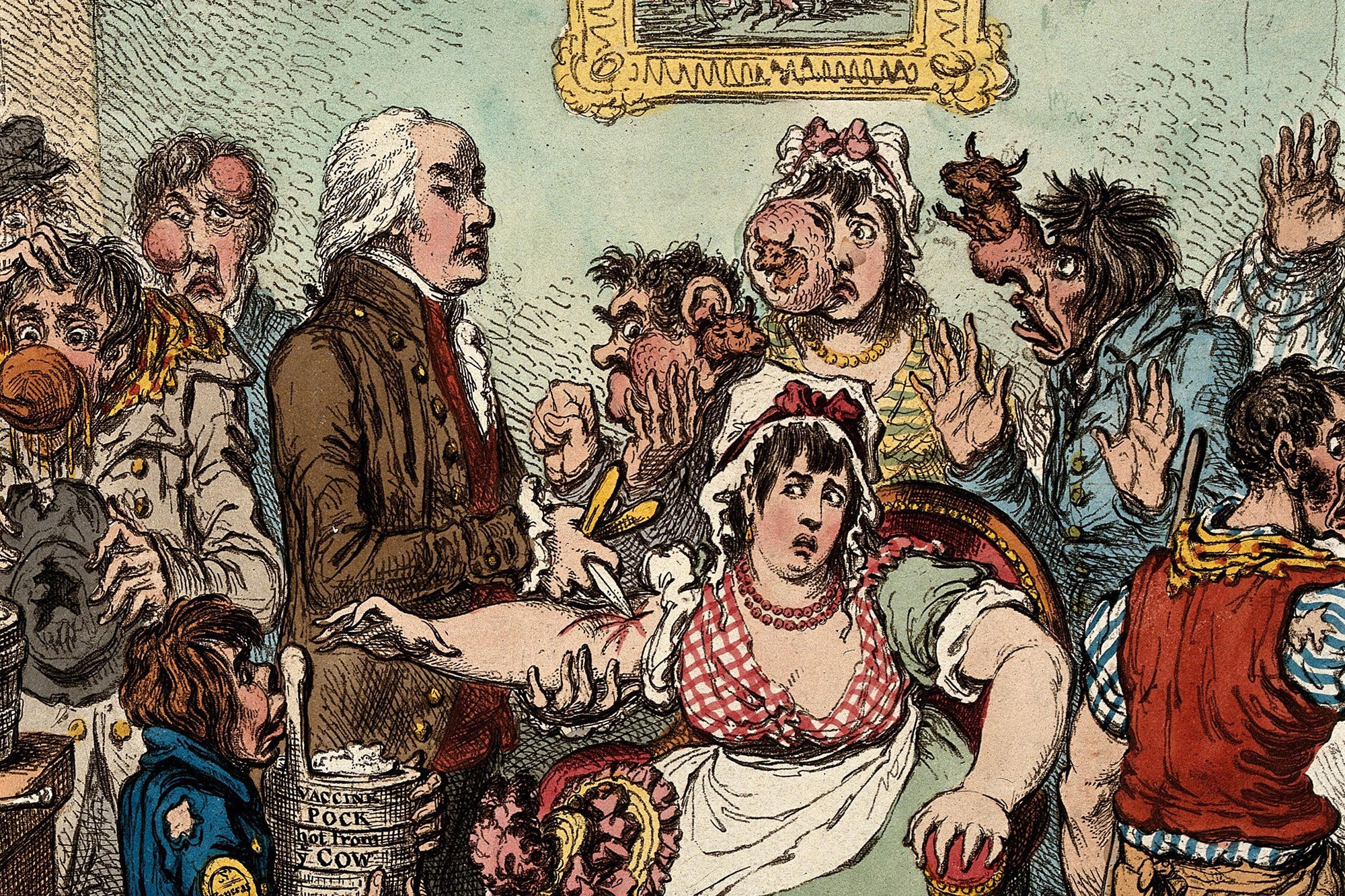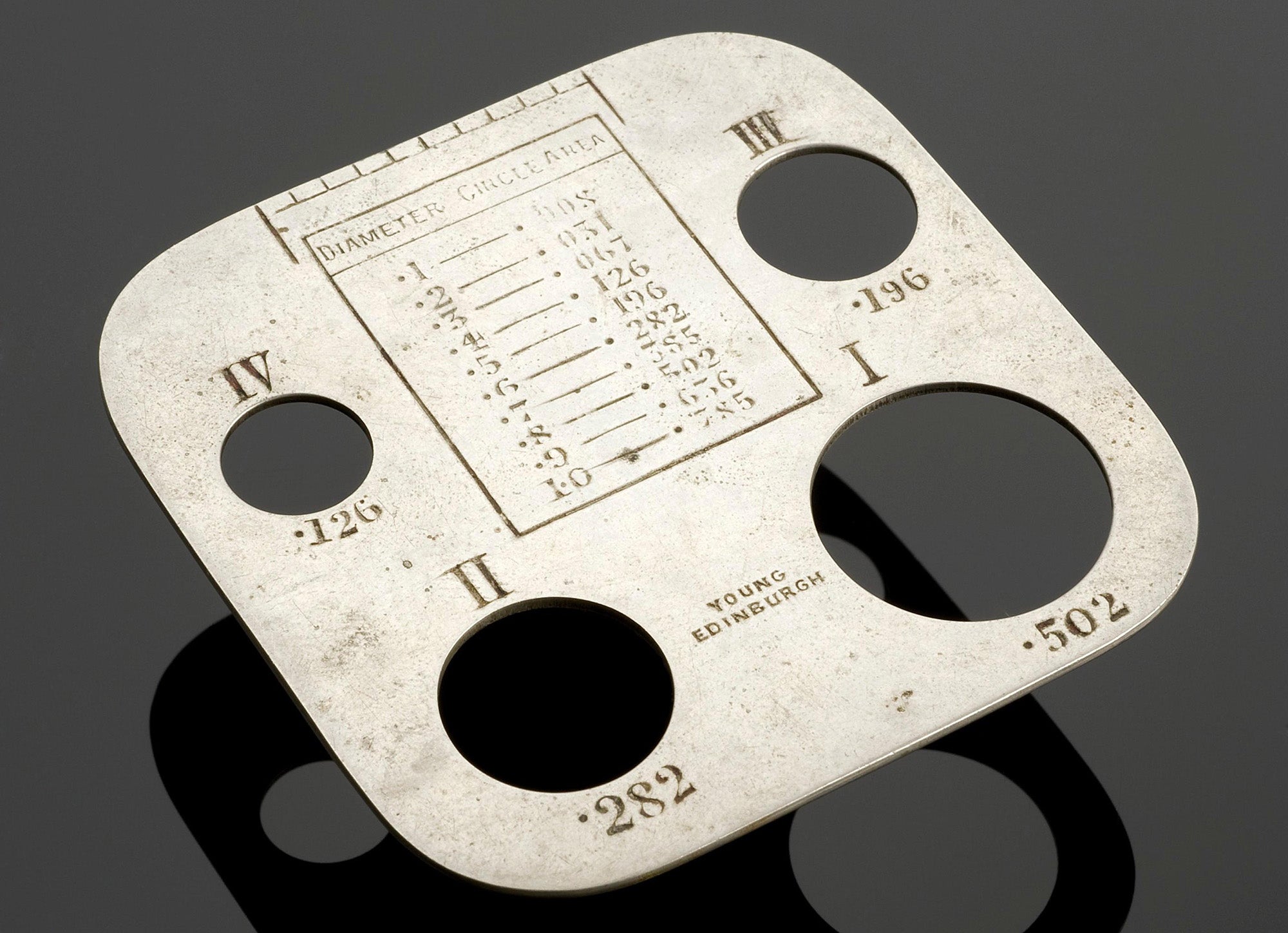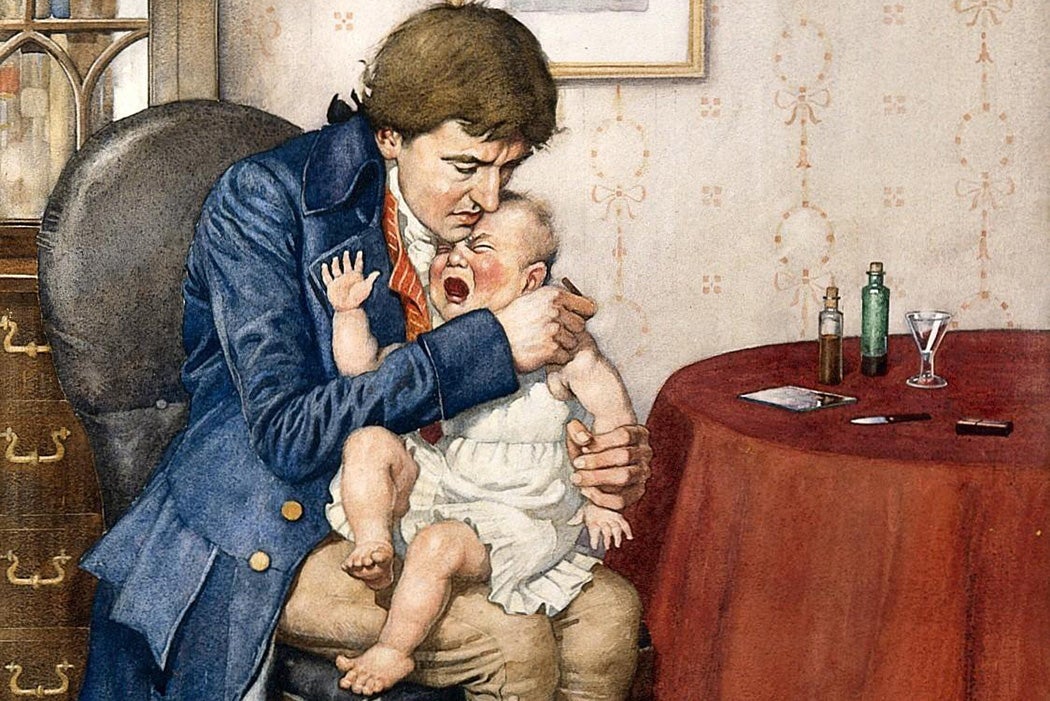Recent discussions around the mass distribution and application of vaccines, long a stalwart of public health programs, have mainly targeted COVID-19 these last years. A perusal of news sites and social media, especially in the United States and Europe, would suggest that COVID-19 vaccine campaigns are uniquely unsettling—that previous campaigns for widespread inoculations were neither emphatic nor divisive. Yet this is far from the first time doctors, public health officials, and members of the public have clashed over the necessity and matter of vaccine distribution.
The concept of bestowing immunity through a small amount of infectious material has existed for centuries; often, it has meant exposing well persons to sick ones. While the process may have occurred as early as 200 BCE, the first widely known and coordinated vaccination campaign began with English physician Edward Jenner in the second half of the eighteenth century. Having observed that milkmaids, among other cases, exposed to cowpox seemed to have greater protection against contracting smallpox, Jenner inoculated a young boy with material from a cowpox sore and then exposed him to smallpox. By doing so, Jenner established the idea of a standardized vaccination and began writing and speaking on its promotion.
Weekly Newsletter
While Jenner today is widely considered the founder of immunology, it is important to note that he was not the first to suggest or implement planned exposures to smallpox. The idea of systematic variolation, that is, building smallpox immunity through routine exposure to a weak case of the virus, was a technique used in ancient India and China. These practices then spread to the Middle East, including Turkey, where Lady Mary Wortley Montagu, a British aristocrat marred by smallpox as a young woman, witnessed their efficacy. Montagu was an unusual woman for her time: she traveled extensively and embraced feminism, experiences that are evident in the essays, letters, and poetry that she left behind. Due to her painful experiences with smallpox, Montagu was particularly impressed with the system she saw in Turkey of inoculating healthy persons. She inoculated her son there using methods she had learned on site and then, after returning to England, her daughter, inviting members of the British scientific community to witness the girl’s immunization. Having shared her findings with physicians and fellow aristocratic women, Montagu eventually gained the support of Princess Caroline for the cause of vaccine development. Without these contributions from other cultures, it is unlikely that European doctors would have had the knowledge to systemize immunizations as early as they did. While Jenner may be remembered as the “inventor” of the modern vaccination movement, his campaigns for widespread immunity were built on both imported ideas and the social work of others to promote acceptance of his methods.

Though Jenner’s first notes and papers on this campaign were never published, we have three treatises from him on the subject, the first of which was sent in 1798 to a doctor in Bath. The preface of these communications makes clear the influence the Enlightenment era had on Jenner and how the shifting attitudes toward the relationship between man and nature shaped his work. “From the love of splendour,” Jenner writes, “from the indulgences of luxury, and from his fondness for amusement he has familiarized himself with a great number of animals, which may not originally have been intended for his associates.” Jenner then reflects on the relationship between new diseases and the domestication of animals, straying from the topic of inoculations to contemplate how the shifting dominions of nature and man have impacted the necessity of such treatments.
Though many were initially skeptical of these new inoculations against smallpox, the successful application of Jenner’s methods gained him respect. By the first few years of the 1800s, Parliament had compensated Jenner for his work, and campaigns promoting smallpox vaccination had become widespread, according to James Carrick Moore’s The History of the Small Pox. In several pieces from the Wellcome Collection, an open-access collection on JSTOR dedicated to cataloging art and literature about the health sciences, Jenner is valorized. An oil painting by Ernest Board from the early 1900s shows him giving the first vaccination to a child. In a work by William Walker, Jenner sits amongst the “distinguished men of science” of Great Britain in 1807, accepted into the pantheon of medical and scientific achievement.

So revered was Jenner that after his death in 1823, objects related to his passing and burial were preserved. These included the chair he died in and several locks of his hair. The hair of the deceased was, at the time, commonly incorporated into pieces of mourning jewelry. Most curious is a piece of fabric taken from Jenner’s burial shroud, which was cut not in 1823, but on March 23, 1854. While Jenner had been buried for over thirty years at this point, the 1854 date is the day before his son Robert was buried, showing that Jenner’s enduring legacy made such mementos attractive to obtain even decades after his death. He was also praised outside of Great Britain; a great number of artifacts in the Wellcome Collection demonstrate his renown in France. He was immortalized in a statue in Boulogne-sur-Mer and in one chromolithograph he is depicted focusing on injecting a calm child with cowpox amidst a pastoral outdoor scene while the child’s mother smiles softly and an assistant collects a sample from a cow in the background.

Such accolades, however, did not shield Jenner or his ideas from pushback. First, there were fellow physicians, many of whom were skeptical about his methods. Jenner won them over by providing them immunizations until his ideas became a standard part of preventative care. As countries began to make certain vaccines mandatory, however, and inoculations became more widespread, the backlash from the general public began.
Many objections to the smallpox vaccine centered around its provenance. After all, the idea of taking material from a common farm animal, the cow, and putting it under the skin of a human, conflicted with ideas about the divisions between humans and beasts that were a key part of Enlightenment-era thinking. In one caricature from 1802, Jenner vaccinates patients at the Smallpox and Inoculation Hospital at St. Pancras; as the inoculation sets in, the recipients’ faces assume bovine features. Unlike the adulatory images of Jenner, this illustration depicts him as stone-faced and frowning, failing to acknowledge the women whom he injects, while off to the side, an associate forcibly ladles blood into a man’s mouth and a Dickensian young boy holds a bucket labeled “vaccine pock hot from ye cow.” This image illustrates the difficulty Jenner’s innovation faced in gaining acceptance outside of his closed, educated circle. Many everyday Britons feared vaccinations and saw the spread of their use as a violation of the laws of religion and nature, according to HJ Parish’s Victory With Vaccines.

While public opinion on Jenner and his work may have been divided, the position of the UK government on the topic of vaccination was not. Recognizing the ability of vaccinations to address the public health concern of smallpox, the government enacted a series of controversial vaccine mandates. The United Kingdom began its campaign with the Vaccination Act of 1840, which made optional vaccinations free of charge and outlawed the variolation methods first used by Jenner in favor of more modern ones. After this came the Vaccination Act of 1853, which mandated childhood vaccinations within three months of birth and established financial penalties for parents who did not comply. Far from just an advancement in public health, these acts also marked a tangible change in Great Britain in terms of the line between private liberties and government mandates. As preventative medicine advanced in the nineteenth century, governments naturally had an interest in making their populations avail themselves of such developments. For some citizens, however, these acts represented the first time government had influenced healthcare in such a way, and a backlash ensued as the two sides negotiated what role, if any, the government should have in the healthcare decisions of its citizens.
After the passage of the Vaccination Act of 1853, Britons rioted in Ipswich, Henley, and Mitford, among other places, and activists founded the Anti-Vaccination League in London. Building on initial objections that vaccine mandates violated personal liberty, the League went so far as to shame Parliament for infringing upon the right of parents to make health decisions for their children. Anti-vaccination tracts became popular, as did public demonstrations. In 1879, an anti-vaccination revolt was planned at Leicester in which local authorities invited delegations from other parts of the country to come with “banners, flags, mottos,” hear from a clergyman who was anti-vaccination, and to enjoy some tea. So mainstream was this event that local newspapers listed accommodation options for out-of-towners.
Political cartoons and other visual matter also took up the cause of anti-vaccination. In one evocative image from around 1802, a monster is fed baskets of infants and excretes them with horns while its sides are filled with pustules labeled “plague,” “pestilence,” “leprosy,” and “Pandora’s box.” A work from 1812 shows a backlash against the Royal College of Physicians’ advocacy of smallpox inoculation. Under the heading “‘tis conscience that makes cow-herds of us all,” physicians are shown surrounding a golden calf, suggesting it has become their idol. Yet another, from 1898, shows a skeleton wielding a scythe in one hand and the 1898 law making smallpox vaccination compulsory in another; below a caption reads, “Triumph of de-Jenner-ation.” Issued as the vaccine act awaited debate in the House of Commons, it demonstrates the continued struggle between those who saw mandatory vaccinations as a matter of public health and those who saw them as a way to strip citizens of freedom of choice and autonomy.

Anti-vaccination movements are, of course, never just about the inoculations. They are about everything from what the speed of medical progress should be to what role the government should play in public health. Whether looking at documents from the anti-vaccination campaigns of the 1890s or the social media discussion threads of the past three years, the same themes emerge again and again. In the case of England, its 1898 Vaccination Act abolished cumulative penalties and established a “conscience clause” that allowed parents to opt out of mandatory inoculations. Not only did this create a truce with the movement, but it also advanced the idea of a “conscientious objector” in English law, an innovation that would reverberate in other parts of British life and government.
The Wellcome Collection makes it clear how contentious issues of medical health have always been when they intersect with public life. Seeing Jenner’s work reflected in both glowing tributes and scathing editorials only emphasizes the impact of public health decisions on collective, national memories. These documents go beyond the scientific aspects of Jenner’s work to demonstrate the role modern vaccines play in so many facets of life: from establishing a legal precedent for waiving federal requirements because of a citizen’s beliefs to the valorization of vaccine creators as national heroes. Debates about vaccination are neither novel nor exceptional to our time; they are instead an all-too-common reaction to forward scientific progress.
Support JSTOR Daily! Join our new membership program on Patreon today.







